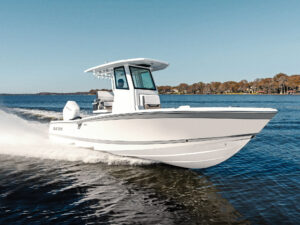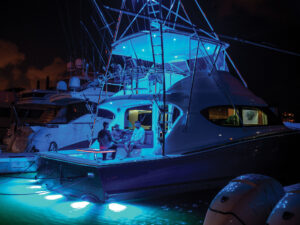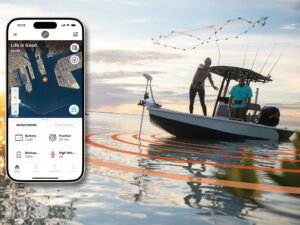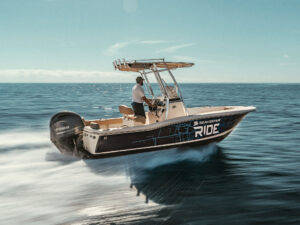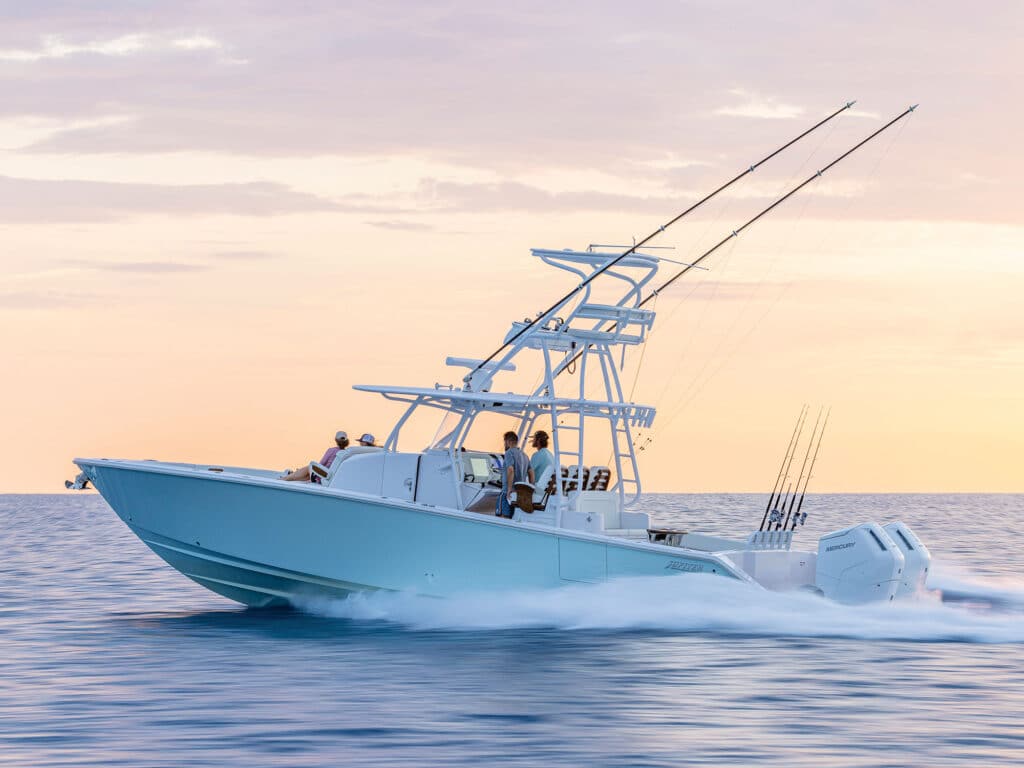
The field of 40-something center-console offshore fishing boats has boomed in the past few years. While an outboard-powered 40-foot center-console proved nearly unthinkable a decade earlier, more than a dozen major boat brands now compete fiercely in this size category. Forty feet represents a magic size, one that can traverse the gnarliest inlets, continue fishing when sea conditions have chased lesser boats to port, and reach distant angling destinations such as the Bahamas, Northeast Canyons or West Coast seamounts, with console interiors big enough for overnighting. Thanks to equipment such as joystick systems and thrusters, they handle and dock easily in crowded marinas and tight slips.
Jupiter Marine’s 40 stands out as not only one of the latest entries, but also one of the category’s most impressive. This new 40 dovetails nicely between Jupiter’s 38 and 43 center-consoles (not to mention the Jupiter 41 SB enclosed-bridge model). Jupiter has not jumped on the step-hull bandwagon, instead relying on a deep-V running surface for the 39-foot-11-inch hull that features 24 degrees of deadrise at the transom and a Posi-Stern hull-pad design.
At speed, the 16,000-pound (with engines) boat rode and handled like a dream in the 2- to 3-foot seas we encountered on test day. Triple Yamaha XTO 450s propelled us to a top speed of 57.3 mph with three crewmembers and a full tank of fuel (500 gallons). At rest and trolling speeds, the nearly 12-foot beam provides remarkable lateral stability for fishing securely, even in cross-sea conditions.
Jupiter builds in durability with composite PVC coring (that means no wood to rot), a fiberglass and foam-filled uni-grid stringer system and vacuum-infused vinylester construction. The inner liner is mechanically bonded to the hull. Separating the transom bulkhead from the motors is a transom platform that lets you easily walk from one side of the boat to the other, a handy trait if you’re trying to fight a big tuna across the transom.
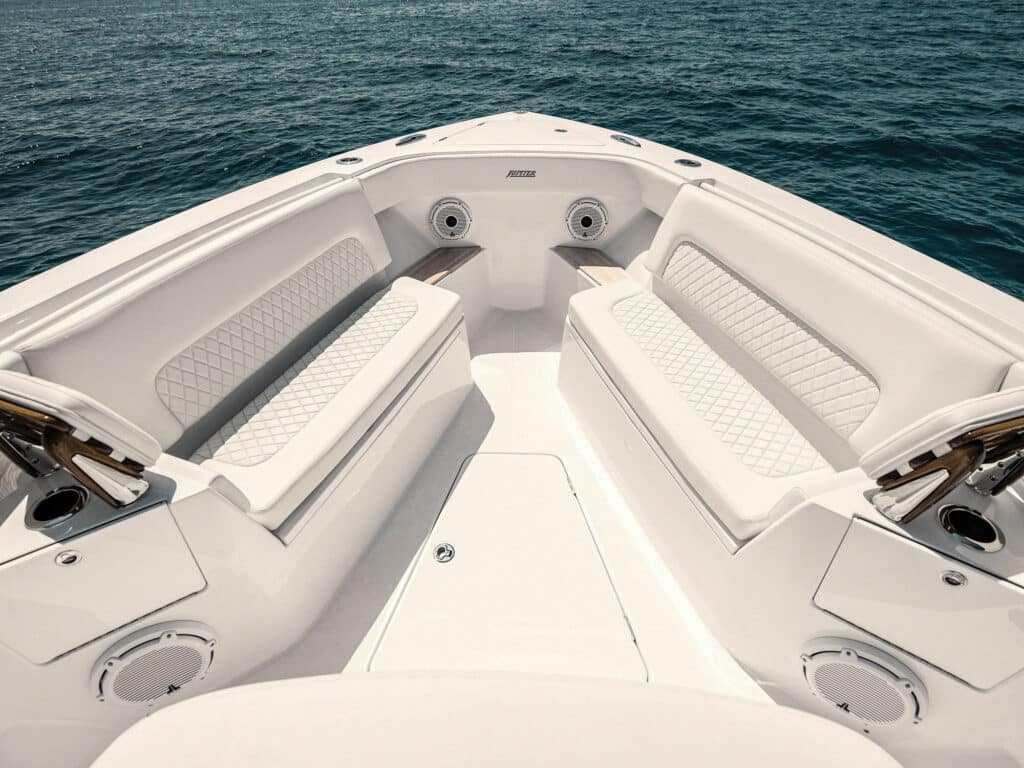
The teak-accents option adorning the gunwale tops on our test boat gave the Jupiter 40 an added touch of class. For comfort while fishing, coaming pads encircle the interior. Anglers will love the 60-gallon pressurized transom livewell with a viewing window (and a seating pad and a backrest), twin 100-gallon insulated fish boxes under the aft cockpit sole, a 126-gallon forward insulated fish box, and a portside door that lets you slide aboard a big tuna or swordfish. There was also a 48-gallon cooler/bait freezer under the aft-facing bench abaft the three-across helm seats on our test boat.
Life afloat is not always about chasing and catching fish. The marine industry in general and Jupiter in particular arrived at this conclusion much sooner than I did, and that’s why the new 40 features an inviting lounger for two atop the forward console. Creature comforts don’t end there. The bow area is adorned with a pair of lounges with integral backrests, so the 40 is as much at home on an evening harbor cruise as it is fishing kites for sails or trolling the edge of an offshore rip for tuna and marlin.
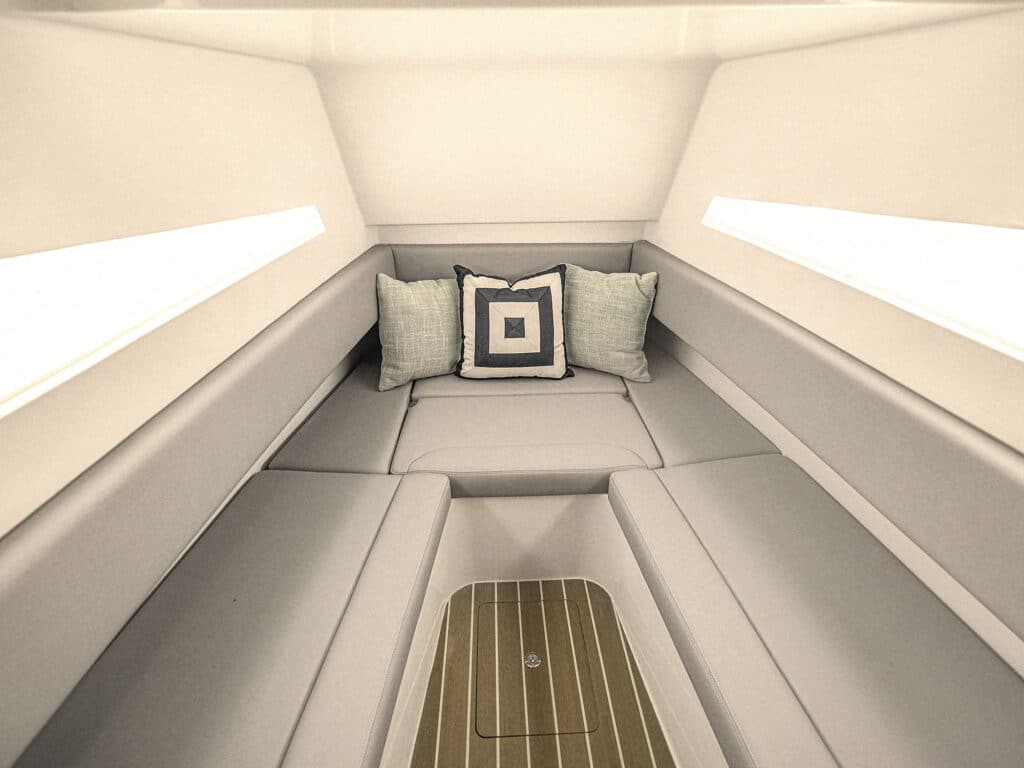
Sometimes you need a handy place to get out of the weather or catch some sleep while in a remote marina or on the anchor in a quiet bay. The Jupiter 40 has you covered (literally) with a roomy console interior, accessed from a companionway on the port side. It offers over 6 ½ feet of headroom, a 7-foot-long berth, a mini galley, a hanging locker, and a separate head compartment with a shower, vanity, sink and electric marine toilet.
A full-height curved acrylic windshield complements the hardtop, and the dash on our test boat featured three Garmin multifunction displays—a 24-inch MFD in the middle and 16-inch MFDs on each side. There was also a special compartment to starboard that lifts open to reveal the Yamaha Helm Master EX joystick and the bow-thruster control. It’s mirrored by a handy glove box on the port side of the helm.
The helm deck itself is elevated about 10 inches to provide a better point of view over the console for the captain and crew, and air-conditioning vents cool the helm area on sultry days. To rock the tunes, our test boat came with a deluxe JL Audio marine system with four 10-inch subwoofers, eight 8-inch speakers and two 6.5-inch speakers.
Read Next: Jupiter 32
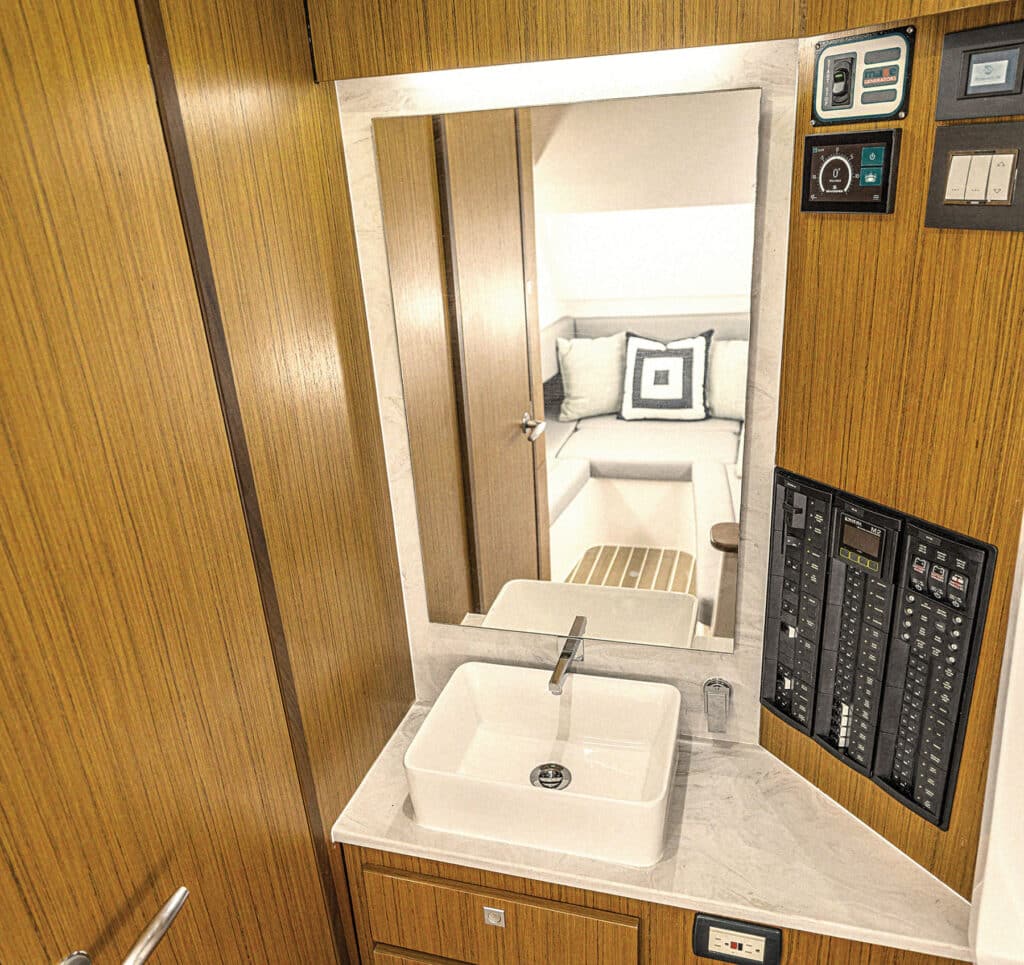
As mentioned earlier, my test boat featured the upgraded Yamaha XTO 450 V-8 outboard, which replaces the XTO 425. The extra 25 ponies come in part thanks to an increase in intake and exhaust volume, but the 450 is also quieter, shifts more smoothly, and boasts more charging power and faster, easier engine tilting. I also liked the new styling of the 450. Aesthetically, it is a significant improvement over the 425.
Ultimately, even in a crowded field of 40-something offshore fishing machines, the Jupiter 40 is hard to ignore, especially when powered by three of the new Yamaha XTO 450 outboards.
Editor’s Note: While the photos in this story depict twin Mercury Verado 600 hp V-12 outboards, our test took place with triple Yamaha XTO 450 V-8 outboards. Photos of the Jupiter 40 with the Yamaha 450s were not available at press time.
Specifications
| Length: | 39’11” |
| Beam: | 11’11” |
| Draft: | 3’3″ (motors down) |
| Fuel: | 500 gal. |
| Water: | 50 gal. |
| Weight: | 16,000 lb. (w/ power) |
| Max HP: | 1,350 |
| Price: | $1,154,045 |
Jupiter Marine – jupitermarine.com

